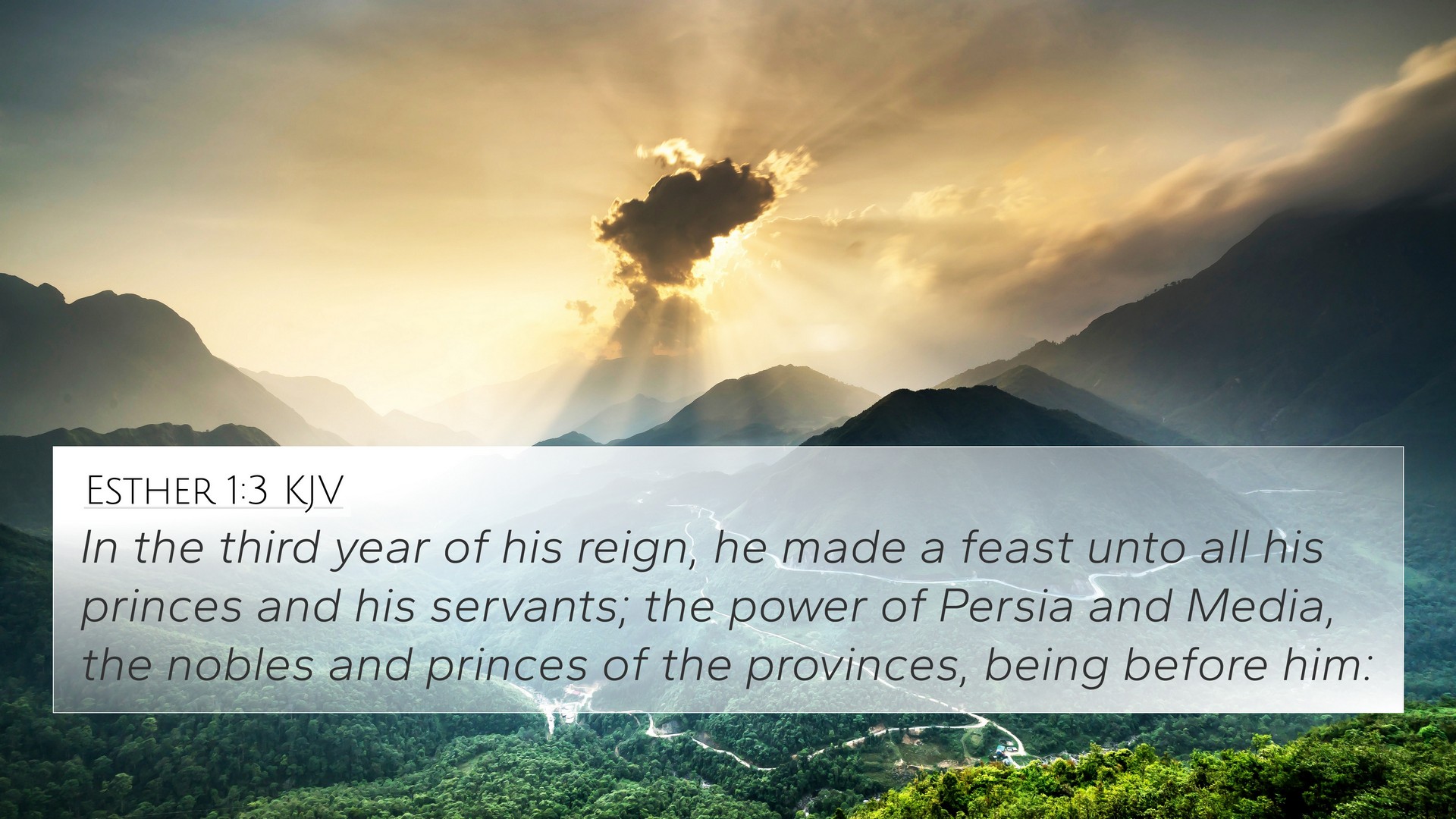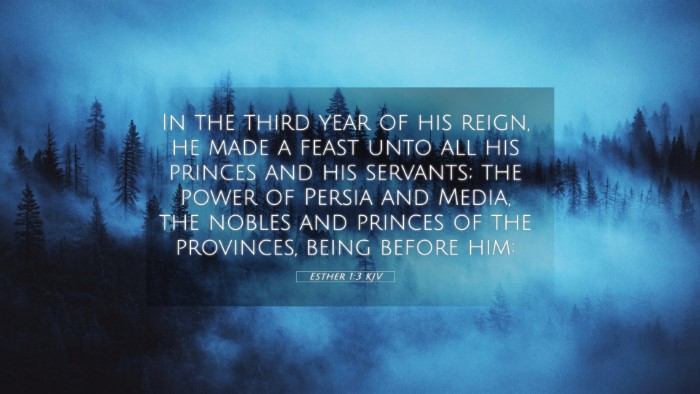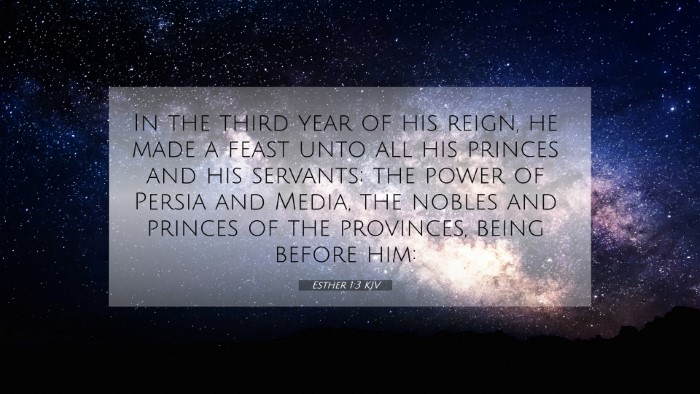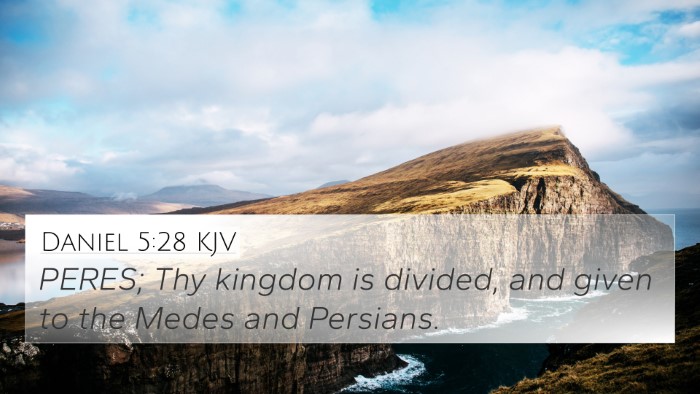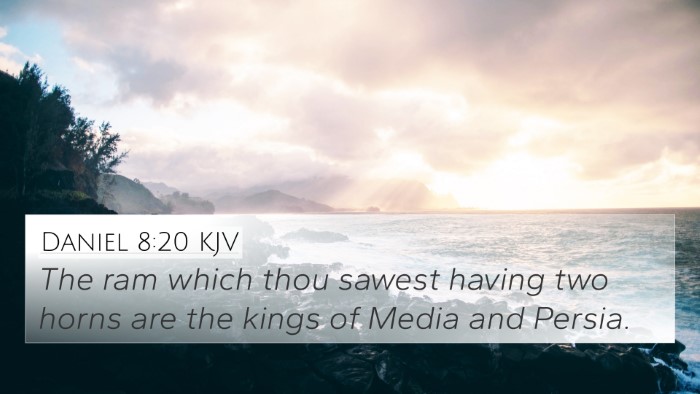Old Testament
Genesis Exodus Leviticus Numbers Deuteronomy Joshua Judges Ruth 1 Samuel 2 Samuel 1 Kings 2 Kings 1 Chronicles 2 Chronicles Ezra Nehemiah Esther Job Psalms Proverbs Ecclesiastes Song of Solomon Isaiah Jeremiah Lamentations Ezekiel Daniel Hosea Joel Amos Obadiah Jonah Micah Nahum Habakkuk Zephaniah Haggai Zechariah MalachiEsther 1:3 Similar Verses
Esther 1:3 Cross References
In the third year of his reign, he made a feast unto all his princes and his servants; the power of Persia and Media, the nobles and princes of the provinces, being before him:
Uncover the Rich Themes and Topics of This Bible Verse
Listed below are the Bible themes associated with Esther 1:3. We invite you to explore each theme to gain deeper insights into the Scriptures.
Esther 1:3 Cross Reference Verses
This section features a detailed cross-reference designed to enrich your understanding of the Scriptures. Below, you will find carefully selected verses that echo the themes and teachings related to Esther 1:3 KJV. Click on any image to explore detailed analyses of related Bible verses and uncover deeper theological insights.
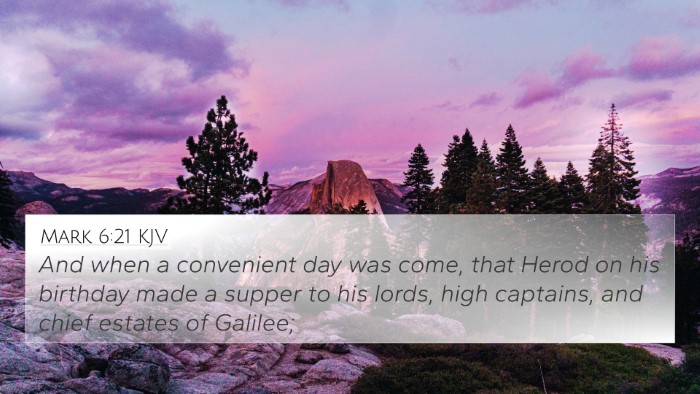
Mark 6:21 (KJV) »
And when a convenient day was come, that Herod on his birthday made a supper to his lords, high captains, and chief estates of Galilee;

Esther 2:18 (KJV) »
Then the king made a great feast unto all his princes and his servants, even Esther's feast; and he made a release to the provinces, and gave gifts, according to the state of the king.
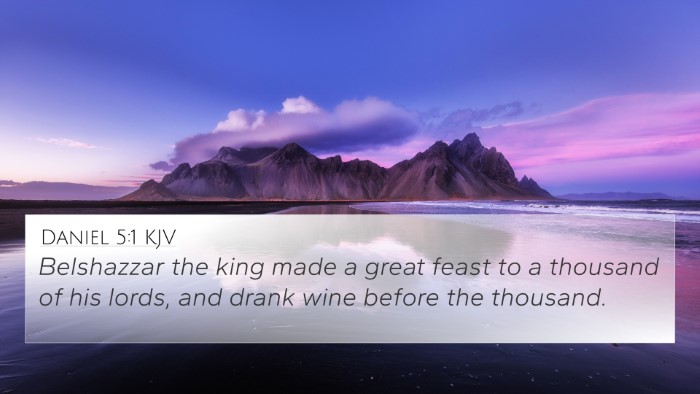
Daniel 5:1 (KJV) »
Belshazzar the king made a great feast to a thousand of his lords, and drank wine before the thousand.
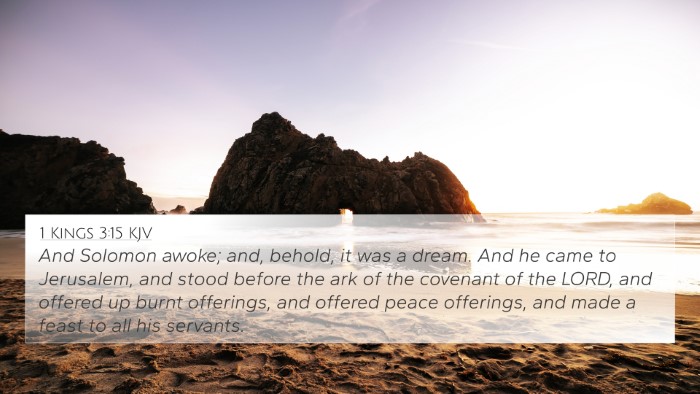
1 Kings 3:15 (KJV) »
And Solomon awoke; and, behold, it was a dream. And he came to Jerusalem, and stood before the ark of the covenant of the LORD, and offered up burnt offerings, and offered peace offerings, and made a feast to all his servants.
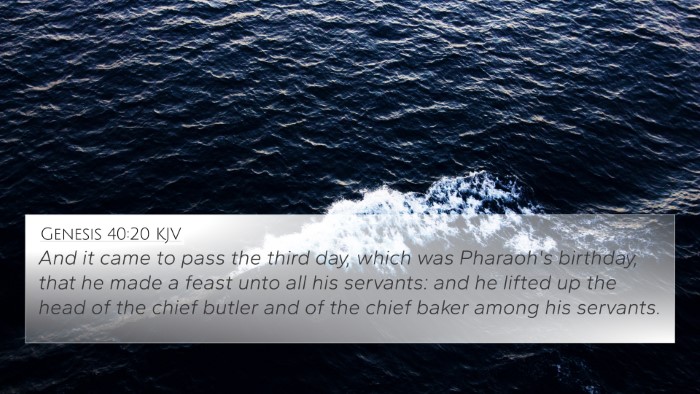
Genesis 40:20 (KJV) »
And it came to pass the third day, which was Pharaoh's birthday, that he made a feast unto all his servants: and he lifted up the head of the chief butler and of the chief baker among his servants.

Jeremiah 51:11 (KJV) »
Make bright the arrows; gather the shields: the LORD hath raised up the spirit of the kings of the Medes: for his device is against Babylon, to destroy it; because it is the vengeance of the LORD, the vengeance of his temple.
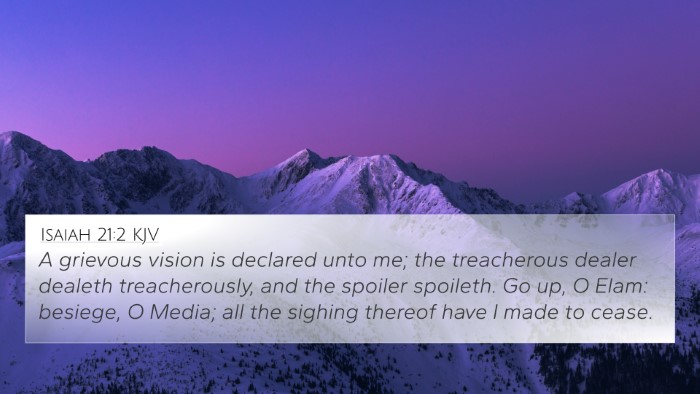
Isaiah 21:2 (KJV) »
A grievous vision is declared unto me; the treacherous dealer dealeth treacherously, and the spoiler spoileth. Go up, O Elam: besiege, O Media; all the sighing thereof have I made to cease.
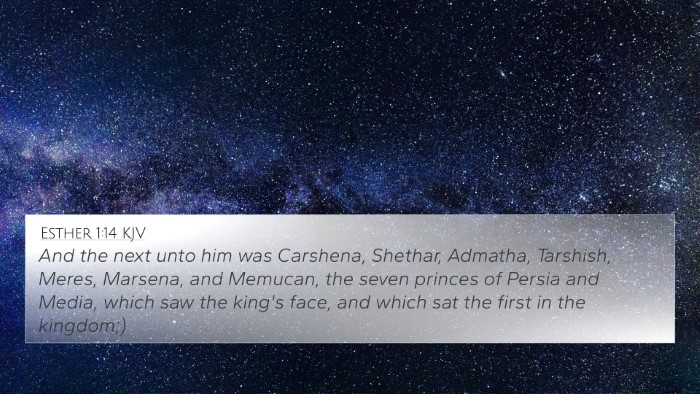
Esther 1:14 (KJV) »
And the next unto him was Carshena, Shethar, Admatha, Tarshish, Meres, Marsena, and Memucan, the seven princes of Persia and Media, which saw the king's face, and which sat the first in the kingdom;)
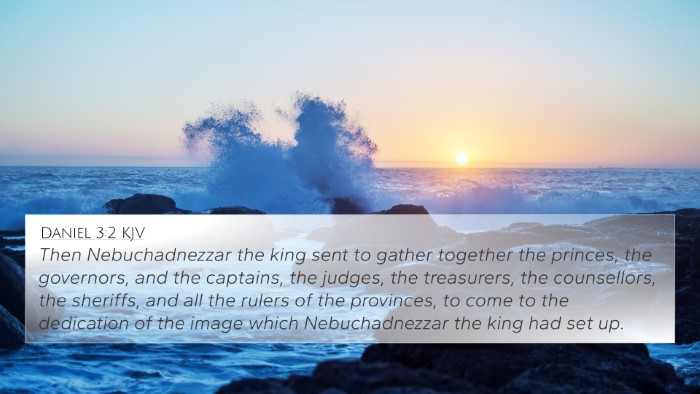
Daniel 3:2 (KJV) »
Then Nebuchadnezzar the king sent to gather together the princes, the governors, and the captains, the judges, the treasurers, the counsellors, the sheriffs, and all the rulers of the provinces, to come to the dedication of the image which Nebuchadnezzar the king had set up.
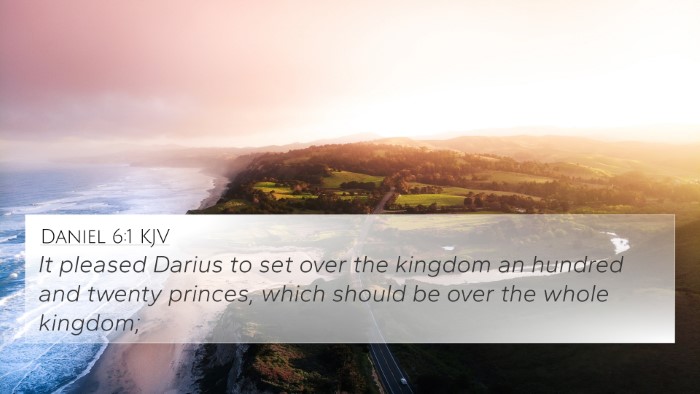
Daniel 6:1 (KJV) »
It pleased Darius to set over the kingdom an hundred and twenty princes, which should be over the whole kingdom;
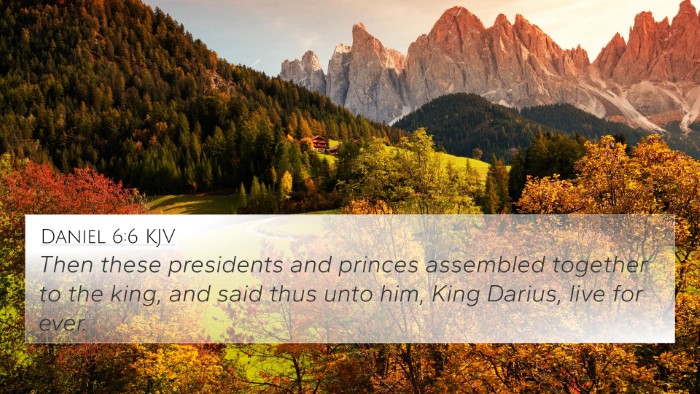
Daniel 6:6 (KJV) »
Then these presidents and princes assembled together to the king, and said thus unto him, King Darius, live for ever.
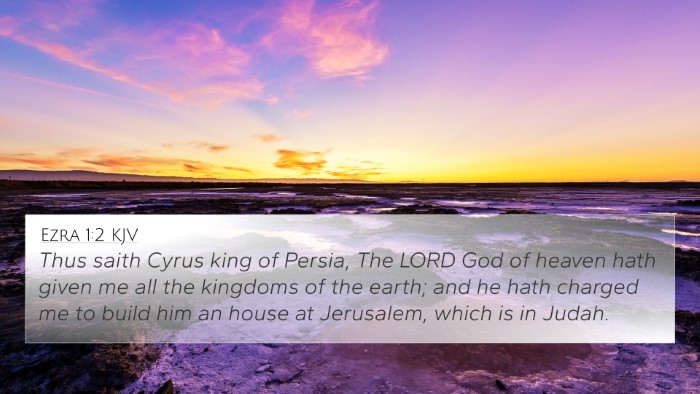
Ezra 1:2 (KJV) »
Thus saith Cyrus king of Persia, The LORD God of heaven hath given me all the kingdoms of the earth; and he hath charged me to build him an house at Jerusalem, which is in Judah.
Esther 1:3 Verse Analysis and Similar Verses
Understanding Esther 1:3
Esther 1:3 states: "In the third year of his reign, he made a feast for all his princes and his servants; the power of Persia and Media, the nobles, and the princes of the provinces being before him." This verse introduces a significant event in the Book of Esther, showcasing King Ahasuerus’ authority and lavishness as he summons his nobles to a grand feast.
Context and Background
In the context of Esther, this verse sets the stage for the unfolding story of Esther, her rise to prominence, and the struggles of the Jewish people. Understanding the historical setting gives deeper insights into the narrative.
Insights from Commentaries
- Matthew Henry: Henry emphasizes the grandeur of the feast and the king’s desire to display his wealth and power. This event is not merely a social gathering; it symbolizes political strength and the king's control over a vast empire.
- Albert Barnes: Barnes notes that Ahasuerus’ intention was to celebrate his successes and consolidate loyalty among his officials. The gathering of the "nobles" indicates the importance of maintaining alliances within a diverse empire.
- Adam Clarke: Clarke points out the third year of Ahasuerus’ reign as a significant marker that positions the narrative in a precise timeline. The opulence of the feast reflects the culture of Persian kings and serves as a backdrop for the dramatic events that follow.
Bible Verse Cross-References
To fully understand Esther 1:3, it can be beneficial to cross-reference with other biblical passages that illustrate themes of feasting, royal authority, and the dynamics of power.
- Esther 5:1-2: Highlights Esther's approach to King Ahasuerus to request an audience, showcasing the power dynamics established in 1:3.
- Daniel 5:1: Similar context of a feast hosted by a king indicating power and celebration.
- Nehemiah 5:17: References gatherings among nobles emphasizing social and political interactions.
- Proverbs 21:1: The heart of a king reflects in these actions, tying into Ahasuerus' disposition as a ruler.
- Luke 14:12-14: Jesus teaches about inviting the poor to feasts, contrasting the opulence displayed by Ahasuerus.
- 1 Kings 10:2: The visit of the Queen of Sheba to Solomon; another royal context that illustrates power and wealth.
- Matthew 22:2: The parable of the wedding feast illustrates the theme of feasting in a royal context.
- Revelation 19:9: Reflects on the heavenly feast, tying back to earthly feasts with divine significance.
- Psalm 23:5: The image of a feast as a metaphor for God's blessings, paralleling royal feasting traditions.
- Isaiah 25:6: Envisions a future banquet of the Lord that echoes the significance of feasting in Jewish tradition.
Thematic Bible Verse Connections
Esther 1:3 is rich in themes that connect to the larger narrative of the Bible, particularly the juxtaposition of earthly feasts against divine providence.
- Authority and Power: The display of power in feasting parallels Ahasuerus' governance style.
- Community and Relationships: The gathering represents social ties that influence political stability.
- Intention and Purpose: Much like the parables of Jesus, the intention behind gatherings can highlight moral lessons.
Engaging with the Text
For those studying the Bible, this verse prompts questions about how modern readers interpret feasting and power dynamics. It bridges Old Testament and New Testament themes, prompting thorough cross-reference analysis:
- How does Esther's feast compare to Jesus' teachings on meals?
- What do royal feasts in the Bible reveal about God's kingdom?
- In what ways do feasts serve as metaphors for divine invitation throughout scripture?
Conclusion
Esther 1:3 serves as a vital entry point into the complex interplay of power, celebration, and divine orchestration within the biblical narrative. By examining cross-references and thematic connections, readers can uncover deeper meanings that resonate throughout the scriptures, reinforcing the importance of understanding context when interpreting scripture.
Utilizing tools for Bible cross-referencing, like concordances and study guides, can enrich one's understanding and facilitate a greater exploration of the connections between Bible verses, enhancing overall Bible study.
